KEEP
ROLE
Lead Designer
DESCRIPTION
Keep is an asymmetrical competitive map designed for 1v1 and 6-player Free-for-All (FFA) gameplay. Set in a dynamic castle environment, the map is focused on providing players with various weapons to gain an edge against opponents.
The concept for Keep originated from a previous level I had been developing in Halo Infinite’s Forge editor, called “Rift.” Initially, the map was designed for 8-player team-based game modes, but after reflecting on the experience, I recognized that the map felt congested and lacked sufficient player movement. To address this, I decided to shrink the player capacity to 6 and pivot the design toward Free-for-All game modes to allow for a more dynamic gameplay flow and reduce the feeling of overcrowding.
After shelving the “Rift” project following the announcement of Firefight mode for Halo Infinite, I transitioned to a different project, Wildcat, which was better suited for PvE gameplay. However, after nearly five months of hiatus, I revisited the original Rift concept, reworked it entirely, and gave it a fresh new name: Keep. This marked a significant shift, as the level now had a more competitive focus and a refined design approach.
I - Concept Map & UEFN

For Keep, I chose to use Unreal Editor for Fortnite (UEFN) due to the extensive collection of PvP elements and assets available in the editor’s kits. As my first project within UEFN, the toolset provided a robust foundation for building a competitive map with many interactive elements. The editor allowed me to focus on optimizing the gameplay experience, from weapons and movement to environmental layout.
UEFN’s flexibility with terrain, environment design, and its ability to incorporate custom assets helped bring my vision for Keep to life in ways I could not have achieved with other tools. I’m extremely satisfied with the result, especially considering this was my debut project using UEFN.
Before diving into the blockout phase in Unreal Editor for Fortnite (UEFN), I started with a concept map design created in Adobe Illustrator. This step was crucial for visualizing the map layout, understanding player flow, and ensuring the asymmetrical design aligned with my competitive gameplay goals.
II - Blockout
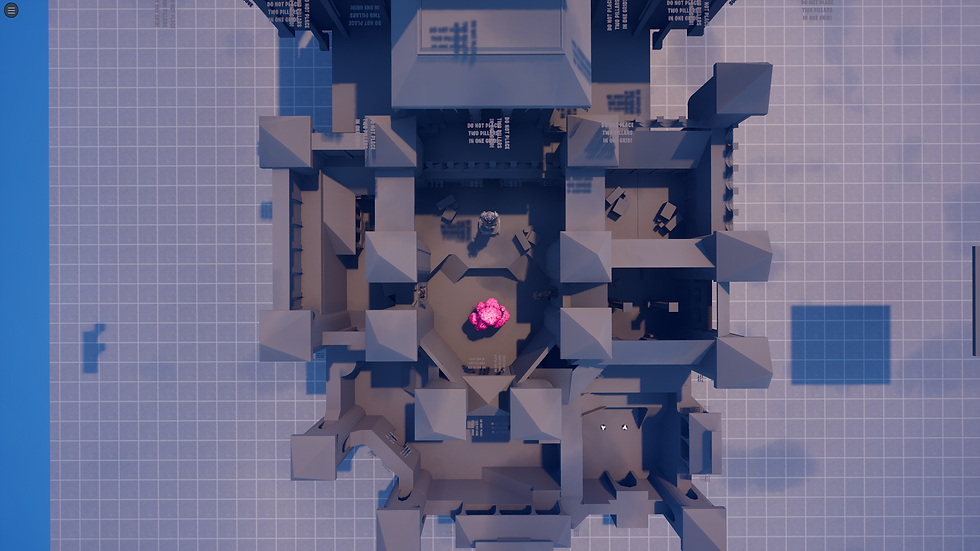

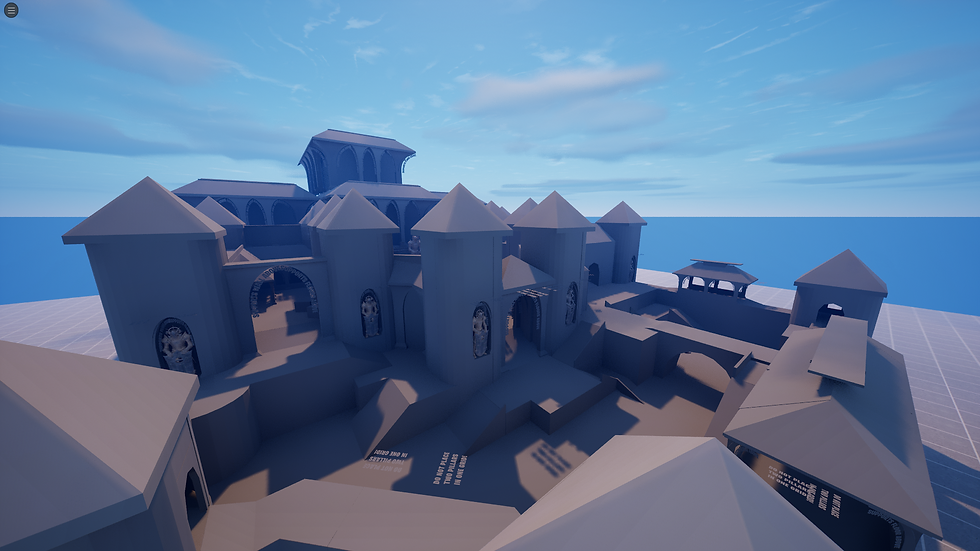

The development of Keep began with a basic blockout phase. The focus during this stage was on creating a layout that emphasized competitive gameplay, particularly for 1v1 and Free-for-All matches. The core design philosophy was to ensure that no area felt too congested while still offering a variety of tactical opportunities for players.
-
Layout and Flow: The map is asymmetrical, ensuring that players have different experiences depending on where they are positioned. The central area of the castle is a high-traffic zone where most of the combat will occur. Surrounding areas provide verticality, allowing players to gain the high ground and giving them strategic advantages. A series of corridors, rooms, and open courtyards ensures that players are constantly engaging in movement and positioning.
-
Weapon Placement: To add depth to the gameplay, various weapons are scattered around the map. However, players are limited to only two weapon slots, preventing excessive weapon hoarding and forcing players to prioritize their loadout. This restriction adds a layer of strategy, as players must carefully consider which weapons will help them the most in each engagement.
III - Art Pass & Lighting Challenges
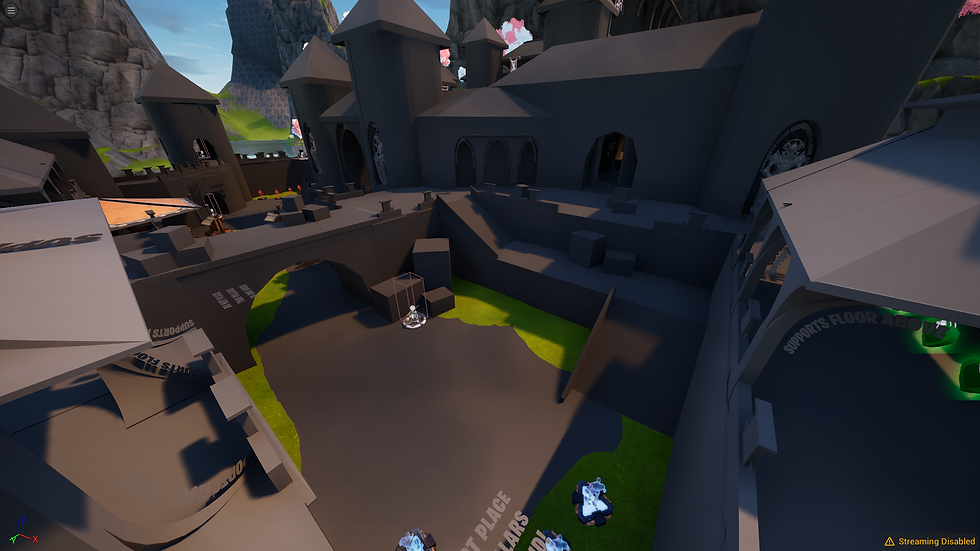
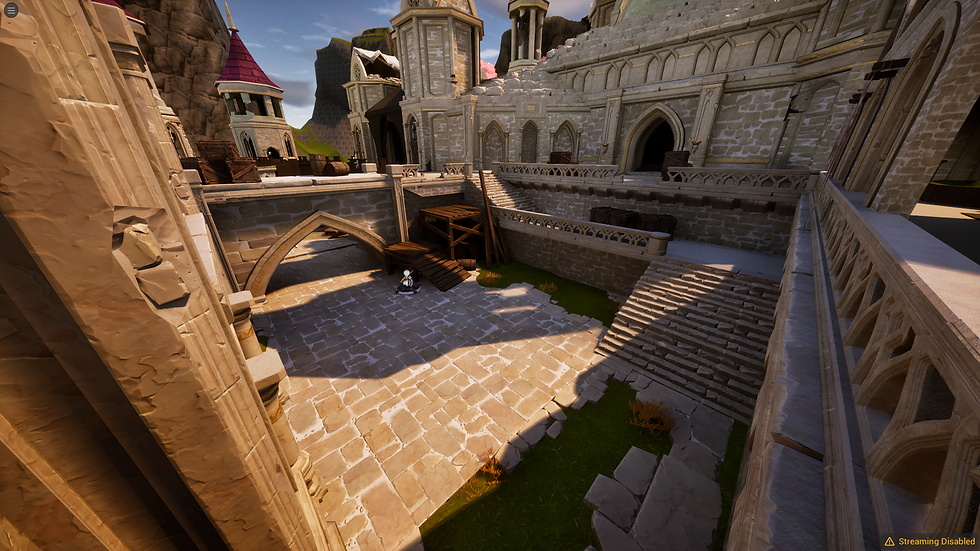
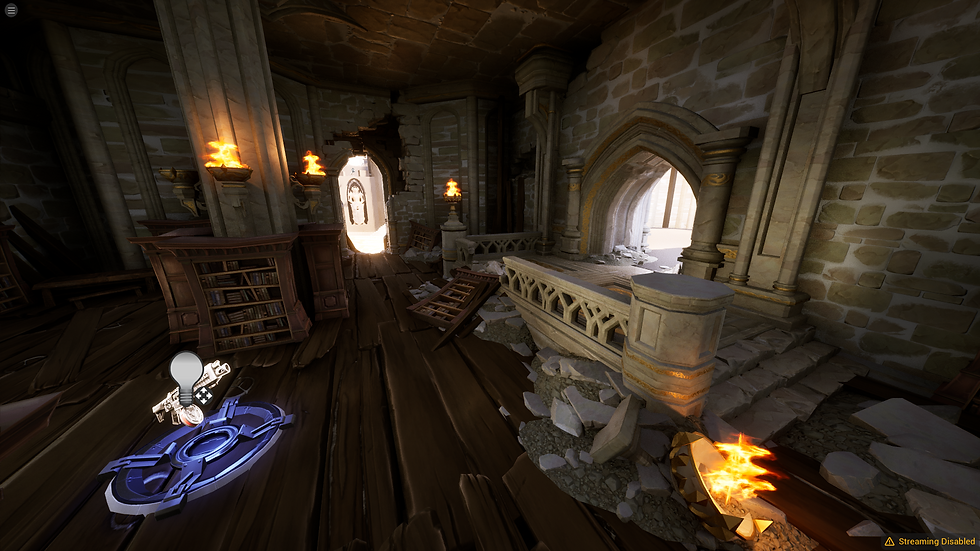

Once the blockout was complete, I moved on to the art pass. This phase involved adding detail and realism to the map by integrating textures, assets, and lighting. One of the major challenges I faced during this phase was achieving the right lighting balance. Initially, the lighting felt too flat and didn’t emphasize the atmospheric tension that a castle setting should convey.
-
Lighting Adjustments: After consulting the UEFN forums and receiving advice from fellow developers, I experimented with different lighting setups, including using dynamic lighting sources and adjusting the intensity of certain light sources to create depth and mood. Eventually, I achieved the right balance, ensuring that the map’s atmosphere was dark and foreboding while still being functional for gameplay. The lighting now enhances the competitive experience, offering players clear visibility while also contributing to the immersive environment.
IV - Polish & Playtest
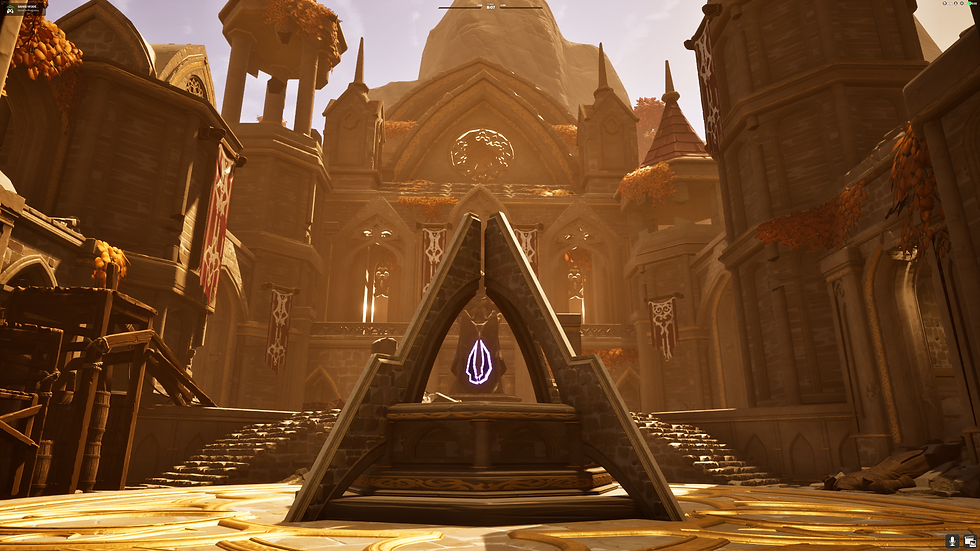

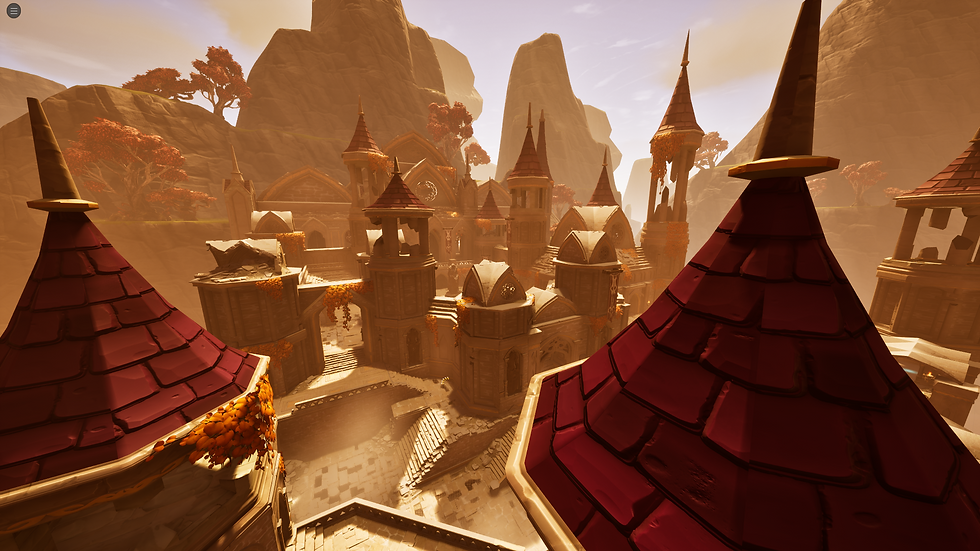

With the art and lighting elements complete, I conducted several rounds of playtesting to ensure the map was engaging and balanced. This phase involved fine-tuning weapon placements, spawn points, and movement flow based on player feedback. I focused on the pacing of the map, ensuring that players could move freely but would still encounter strategic bottlenecks for intense combat situations.
-
Balancing and Refinement: Feedback from playtesters revealed a few areas where combat felt too clustered or too spread out. These areas were adjusted by shifting spawn points, narrowing certain corridors, and adding more cover in key locations. The result was a map that felt well-paced, with players constantly engaged in combat while also having moments of reprieve and strategic decision-making.
Learning Outcomes
Working on Keep has been a significant learning experience. My primary takeaway from the project was a deeper understanding of UEFN's capabilities, particularly its ability to create a seamless competitive environment. The process of designing for 1v1 and Free-for-All gameplay helped me hone my skills in balancing player movement, weapon placement, and map flow.
Additionally, I gained a stronger appreciation for the iterative nature of game design. The challenges I faced with lighting, layout, and weapon balancing required constant testing, adjustments, and feedback from playtesters. Each round of testing refined the map and helped me understand the nuances of competitive design.